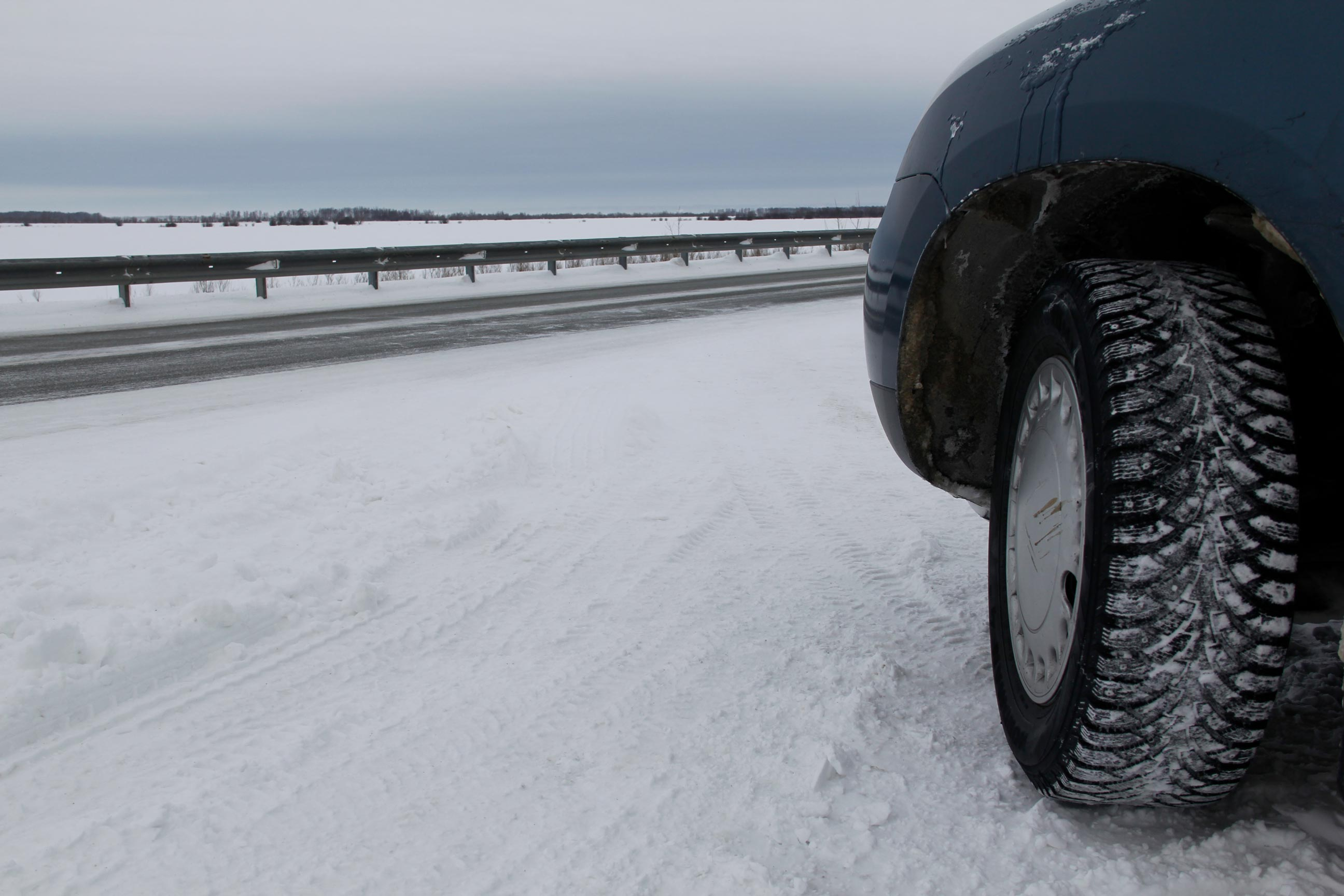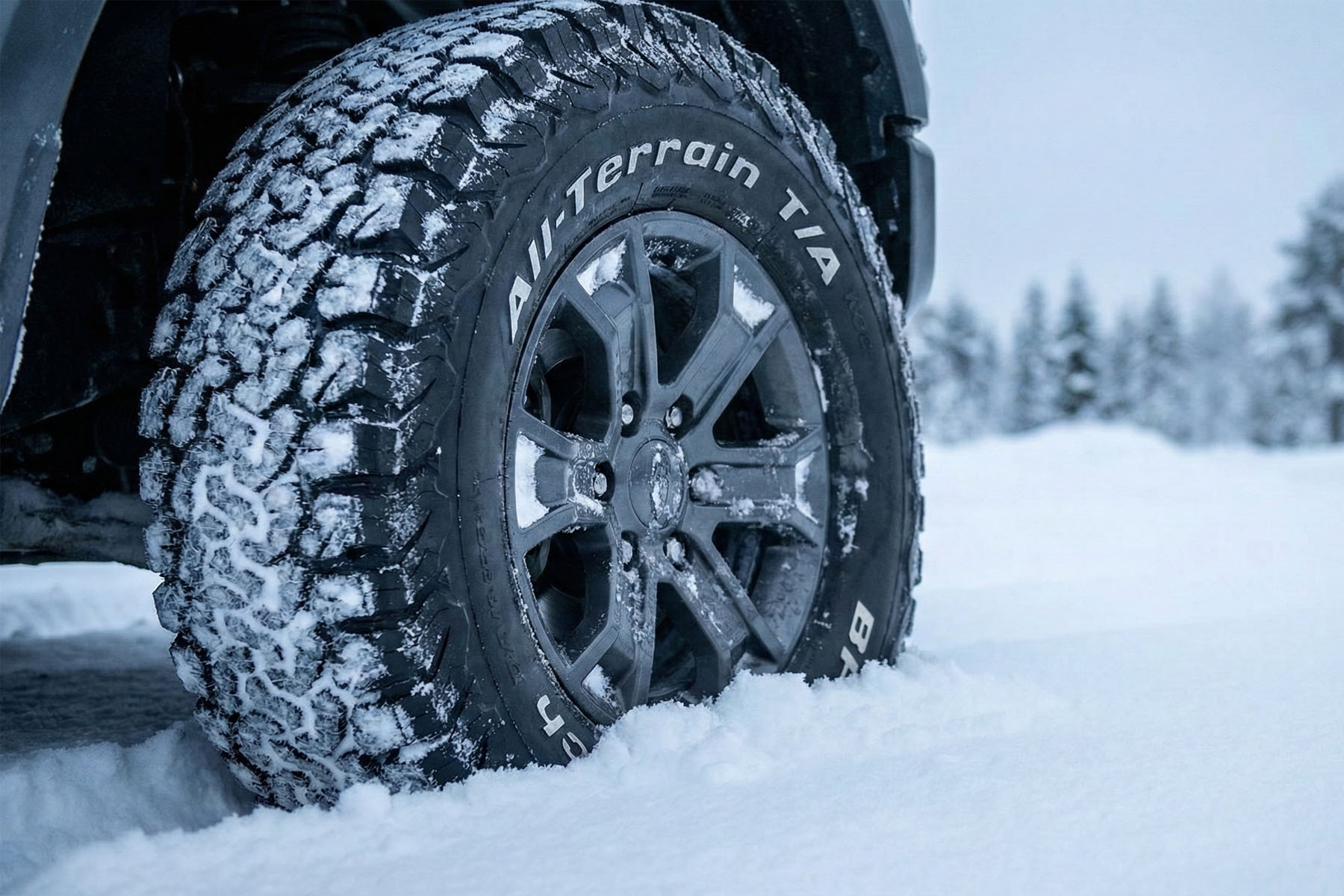Did you know that over 60% of winter accidents in Alberta are caused by inadequate tires? Winter tires are essential for safe driving in harsh conditions. They provide better traction, handling, and braking on snow and ice. In Alberta, where temperatures can plummet and roads can become treacherous, having the right tires is not just a choice; it’s a necessity.
Investing in quality winter tires can make a significant difference in your vehicle’s performance. They help you navigate through the toughest weather while keeping you and your passengers safe. Understanding when to switch to winter tires and how they work is crucial for every driver in Alberta. Stay ahead of the winter challenges and ensure your vehicle is ready for whatever Mother Nature throws your way.
Key Takeaways
-
Winter tires are crucial for safety on Alberta’s icy roads; they provide better traction and handling in cold conditions.
-
Familiarize yourself with Alberta’s winter tire regulations to ensure compliance and enhance safety during winter driving.
-
Using winter tires can significantly reduce the risk of accidents, as they are designed to perform well in low temperatures and snowy conditions.
-
When selecting winter tires, consider factors like tread design, rubber composition, and vehicle type to find the best fit for your needs.
-
Install your winter tires before the first snowfall, ideally when temperatures consistently drop below 7°C (45°F), to maximize their effectiveness.
-
Regularly check your tire pressure and tread depth throughout the winter season to maintain optimal performance and safety.
Importance of Winter Tires
Safety on Icy Roads

Alberta experiences harsh winter conditions. Icy roads significantly increase the risk of accidents. Statistics show that winter months see a rise in collisions. Winter tires are designed to improve stopping distances. They provide better traction on ice, which is crucial for safety.
Proper tire maintenance is essential for optimal performance. Drivers should regularly check tire pressure and tread depth. Worn-out tires can lead to longer stopping distances. Ensuring tires are in good condition enhances overall safety on icy roads.
Enhanced Vehicle Control
Winter tires offer improved handling on slippery surfaces. Drivers notice better steering response when using winter tires. Specialized tread designs help navigate through snow and slush effectively. These designs channel water away, reducing the risk of hydroplaning.
The enhanced grip provided by winter tires is vital during sudden maneuvers. This grip helps maintain control when making quick turns or stops. With winter tires, drivers can feel more confident on treacherous roads.
Legal Requirements
Understanding Alberta’s advisory stance on winter tire use is important. During severe weather, using winter tires is highly recommended. While not mandatory, they provide significant safety benefits.
In national parks, specific regulations apply regarding tire requirements during winter months. Some parks may require vehicles to have winter tires or chains in snowy conditions. Always check local regulations before traveling to ensure compliance.
Staying informed about potential changes in legislation is crucial. Laws regarding winter tire usage can evolve based on safety data and road conditions. Being aware of these changes helps drivers stay safe and legal on the roads.
Alberta’s Winter Tire Regulations
Mandatory Tire Use
Winter tires are not legally required in Alberta. However, they come highly recommended for safety. Many accidents occur during winter due to icy roads. Driving without winter tires increases the risk of losing control. Extreme weather events can happen suddenly. It is crucial to consider how these conditions affect driving. Personal responsibility plays a big role in tire choices. Drivers must evaluate their own situations and decide based on current weather conditions.
Studded Tire Legality
Studded tires are allowed year-round in Alberta. This flexibility benefits drivers who face tough winter conditions. Studded tires provide better traction on ice and snow. They improve stability, especially in rugged terrains. However, there are some drawbacks. Studded tires can cause increased road wear over time. They also tend to create more noise while driving. Weighing these pros and cons is important for every driver.
Installation Timeframe
Installing winter tires should happen before severe winter weather starts. Planning ahead helps avoid last-minute rushes. It’s wise to change tires regularly as seasons shift. This ensures vehicles are ready for changing driving conditions. Scheduling professional installation can save time and ensure proper fitting. Improperly installed tires may lead to poor performance or safety issues.
Benefits of Using Winter Tires

Improved Traction and Grip
Winter tires are designed for superior traction on cold, icy roads. Their rubber compounds stay flexible in low temperatures. This flexibility allows the tires to grip the road better than all-season tires. In snowy conditions, winter tires outperform all-season models significantly. They feature unique tread patterns that help channel snow and water away from the tire surface.
Tests show that winter tires can reduce stopping distances on ice by up to 30%. This is crucial for safety during Alberta’s harsh winters. Drivers can feel more confident knowing their vehicle has better control when navigating slippery roads.
Longevity of Tire Life
Using winter tires can extend the lifespan of all-season tires. This happens because winter tires handle the harsh conditions, reducing wear on all-season options. Regularly monitoring tread depth helps ensure that winter tires remain effective throughout the season. Tires should have a minimum tread depth of 6/32 inches for optimal performance in winter.
Investing in quality winter tires maximizes durability and performance over time. Cheaper options may wear out faster and compromise safety. A good set of winter tires can last several seasons if properly maintained.
Fuel Efficiency
Winter tires can impact fuel consumption compared to all-season options. They provide better grip but may lead to slightly higher fuel costs due to increased rolling resistance. Drivers must consider trade-offs between grip and fuel efficiency when selecting winter tires.
While winter tires might increase fuel consumption by about 2-5%, their enhanced traction often outweighs this drawback. Improved safety and control in icy conditions can prevent accidents and costly repairs in the long run. Evaluating long-term cost benefits helps drivers make informed decisions about their tire choices.
Choosing the Right Winter Tires
Types of Winter Tires
Studded and non-studded winter tires serve different driving needs. Studded tires offer better traction on ice. They have metal studs that grip icy surfaces. These tires are ideal for areas with heavy ice accumulation.
Non-studded winter tires, often called cold weather tires, perform well in snow and slush. They rely on specialized rubber compounds and tread designs for grip. In Alberta, many drivers prefer these for their versatility. Research shows brands like Michelin and Bridgestone offer various models suited to local conditions. Each model has unique features, such as improved handling or noise reduction. Understanding these differences helps consumers make informed choices.
Top Tire Brands
Several leading tire brands stand out for their winter tire offerings. Brands like Goodyear, Pirelli, and Continental are known for quality. Customer reviews often praise their performance in harsh conditions.
Expert recommendations also highlight these brands. For instance, Goodyear’s Assurance WeatherReady is popular for its all-around performance. Many users report enhanced control in snowy weather. Warranty options vary among brands. Most offer a limited warranty covering defects and wear. Customer service support is crucial too. Reliable brands provide assistance with installation and maintenance questions.
Tread Patterns to Consider
Different tread patterns significantly affect winter tire performance. Wide grooves help channel water away from the tire surface. This reduces hydroplaning risk on wet roads. Meanwhile, deeper treads enhance traction in deep snow.
Specific tread designs improve handling on ice. For example, some tires feature sipes—small slits in the tread blocks. These increase biting edges for better grip. Tread depth also plays a role in tire effectiveness. A minimum of 6/32 inches is recommended for optimal performance.
In Alberta’s snowy climate, selecting the right snow tires can greatly impact safety and comfort. Drivers should carefully evaluate their needs based on driving conditions and preferences.
When to Install Winter Tires

Seasonal Timing
Alberta experiences harsh winters. The best time to install winter tires is typically between late October and early November. This timing helps prepare for the first snowfall.
Weather forecasts play a crucial role in this decision. Keep an eye on predictions, especially when temperatures drop below 7 degrees Celsius. At this temperature, all-season tires lose their effectiveness.
Planning seasonal tire changes is essential due to Alberta’s unpredictable weather. Sudden snowstorms can occur even in October. Having winter tires ready ensures safety during these unexpected events.
Weather Conditions to Watch
Changing weather patterns can significantly affect driving conditions. Alberta often sees rapid shifts from clear skies to heavy snowfall. Staying alert to these changes is vital for safe driving.
Temperature fluctuations also impact tire performance. As temperatures dip, winter tires provide better grip on icy roads. A sudden drop in temperature can make roads slick and dangerous.
Prepare for sudden snowstorms or icy conditions by installing winter tires early. Waiting too long may leave you unprepared for hazardous driving situations. Having winter tires already on your vehicle can save you from potential accidents.
Final Remarks
Winter tires are not just a suggestion in Alberta; they’re essential for your safety and performance on icy roads. They provide better traction, control, and braking, making your winter driving experience much safer. Understanding Alberta’s regulations ensures you’re compliant while reaping the benefits of these specialized tires.
Choosing the right winter tires and knowing when to install them can save you from accidents and costly repairs. Don’t wait until the snow falls—get prepared now. Invest in winter tires to keep you and your loved ones safe this season. Your vehicle deserves the best, and so do you. Take action today!
Frequently Asked Questions
What are winter tires?
Winter tires are specially designed for cold weather conditions. They provide better traction, handling, and braking on snow and ice compared to all-season tires.
When should I install winter tires in Alberta?
Install winter tires when temperatures consistently drop below 7°C (45°F). Typically, this is from late October to early November in Alberta.
Are winter tires mandatory in Alberta?
While winter tires are not legally required in most areas of Alberta, they are highly recommended for safety during winter months, especially in mountainous regions.
How do winter tires improve safety?
Winter tires enhance grip on icy and snowy roads. Their unique tread patterns and softer rubber compounds help reduce stopping distances and improve control.
Can I use all-season tires in winter?
All-season tires can handle mild winter conditions but may not perform well in heavy snow or ice. For optimal safety, winter tires are recommended.
How long do winter tires last?
Winter tires typically last 4-6 seasons, depending on usage and maintenance. Monitor tread depth regularly to ensure optimal performance.
Where can I buy winter tires in Alberta?
You can purchase winter tires from local tire shops, automotive retailers, or online marketplaces. Always choose a reputable dealer for quality products and service.
Here are some of Nothing But Tires’ Top Resources:
Understanding Tread Rubber compounds
Handle extreme winter conditions
Looking for help navigating the purchase and transition from summer to winter tires cost, to snow or all weather tyres? no problem Nothing But Tires offers a huge selection of rubber to meet your needs and budget! Contact our team and get informed help with the experts. With exceptional experience in providing both new and used tires and from full sets or a single tire to replace damaged unit, we are here to help!

